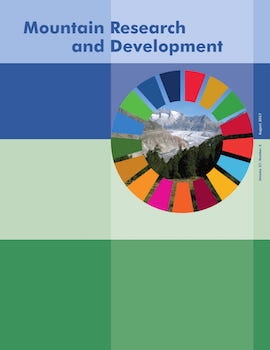Managing MIDAs: Harmonising the Management of Multi-Internationally Designated Areas-Ramsar Sites, World Heritage Sites, Biosphere Reserves and UNESCO Global Geoparks by Thomas Schaaf and Diana Clamote Rodrigues. Gland, Switzerland: IUCN, 2016. xvi + 140 pp. Free download at: https://portals.iucn.org/library/node/46176. ISBN 978-2-8317-1793-7.
The internationally designated areas (IDAs) to which Managing MIDAs refers are globally recognized under 4 mechanisms: wetlands are listed under the Ramsar Convention; natural and mixed sites and cultural landscapes are listed under the World Heritage Convention; Biosphere Reserves are recognized by the Man and the Biosphere Programme of the United Nations Educational, Scientific and Cultural Organization (UNESCO); and Global Geoparks are recognized under UNESCO's International Geoscience and Geoparks Programme. There are more than 3300 IDAs worldwide, of which two thirds are Ramsar sites. Among these, there are about 270 areas where 2, 3, or even 4 designations fully or partially overlap: these are multi-internationally designated areas (MIDAs). A considerable proportion of these are in mountain areas.
Managing MIDAs stems from a resolution adopted at the 2012 World Conservation Congress of the International Union for the Conservation of Nature (IUCN) that recognized that multiple designation brings both benefits and challenges to those managing, funding, promoting, and earning their livelihoods in and around MIDAs. The document is described as a guidance resource for such stakeholders and has 6 main parts. Part 1 provides the background and defines the objectives of Managing MIDAs and identifies 3 target audiences: site managers at the local level, authorities and focal points at the national level, and designating bodies at the international level. Part 2 provides an overview and comparison of the 4 types of IDAs as well as other international designations, both regional—in Europe and Southeast Asia—and global.
Part 3 is the longest, identifying and discussing both benefits and challenges of MIDAs and presenting 11 case studies, including 4 from mountain areas. This key section derives from many sources, including review of documents, interviews with individual site managers, a 3-day international workshop with site managers, a workshop during an IUCN meeting in Europe, and discussions at meetings of the designating bodies of the 4 types of IDAs, whose secretaries formed the steering group for the project. The 10 benefits recognize the potential for increasing the resilience of MIDAs to external pressures; linking conservation and sustainable development; underlining the importance of these areas for research, education, and public awareness; strengthening inter-institutional cooperation; assisting in fund-raising; and increasing visibility and prestige, which can contribute to local economies. However, 15 challenges are also identified. These may relate to conflicting objectives among the different types of IDAs; lack of coordination between managing authorities; inter-institutional tensions and competition, including for funding; heavy workloads for reporting; ineffective information flows to and from global secretariats; resistance among local communities; and confusion among both local communities and visitors regarding the significance of the different designations. Finally, the achievement of conservation objectives may be endangered by too many visitors.
To address the identified challenges and maximize potential benefits in order to contribute to sustainable development that also enhances environmental conservation, Part 4 presents 25 recommendations, each backed up by detailed arguments: one set of recommendations for each of the 3 target audiences.
Part 5 presents a case study of the self-governing province of Jeju Island, Republic of Korea, the only MIDA with all 4 designations. This island has more than 360 volcanoes, the highest rising to 1950 m, and ecosystems with more than 2000 plant species ranging from subtropical to subpolar. The case study describes the processes by which the various IDAs were sought and obtained beginning in 1999. From 2001 to 2014, visitor numbers increased from just over 4 million in 2001 to nearly 14 million; the island has only 610,000 residents. The authors conclude that the multiple designation has led to a high level of local awareness of the critical connections between environmental conservation and sustainability. A unified management framework supported by both the provincial and national governments is under development, and a vision for the future grounded in the Sustainable Development Goals is proposed. Many challenges remain, but recognition of the need for effective governance that builds on synergies between the objectives of the different IDAs appears to be in place.
Overall, Managing MIDAs not only provides guidance to the 3 target audiences, but also presents much useful information for those interested in IDAs, including a list of websites in Part 6, useful references, and a list of MIDAs as of the date of publication. It should therefore also be useful for students, researchers, and those working in nongovernmental organizations.





